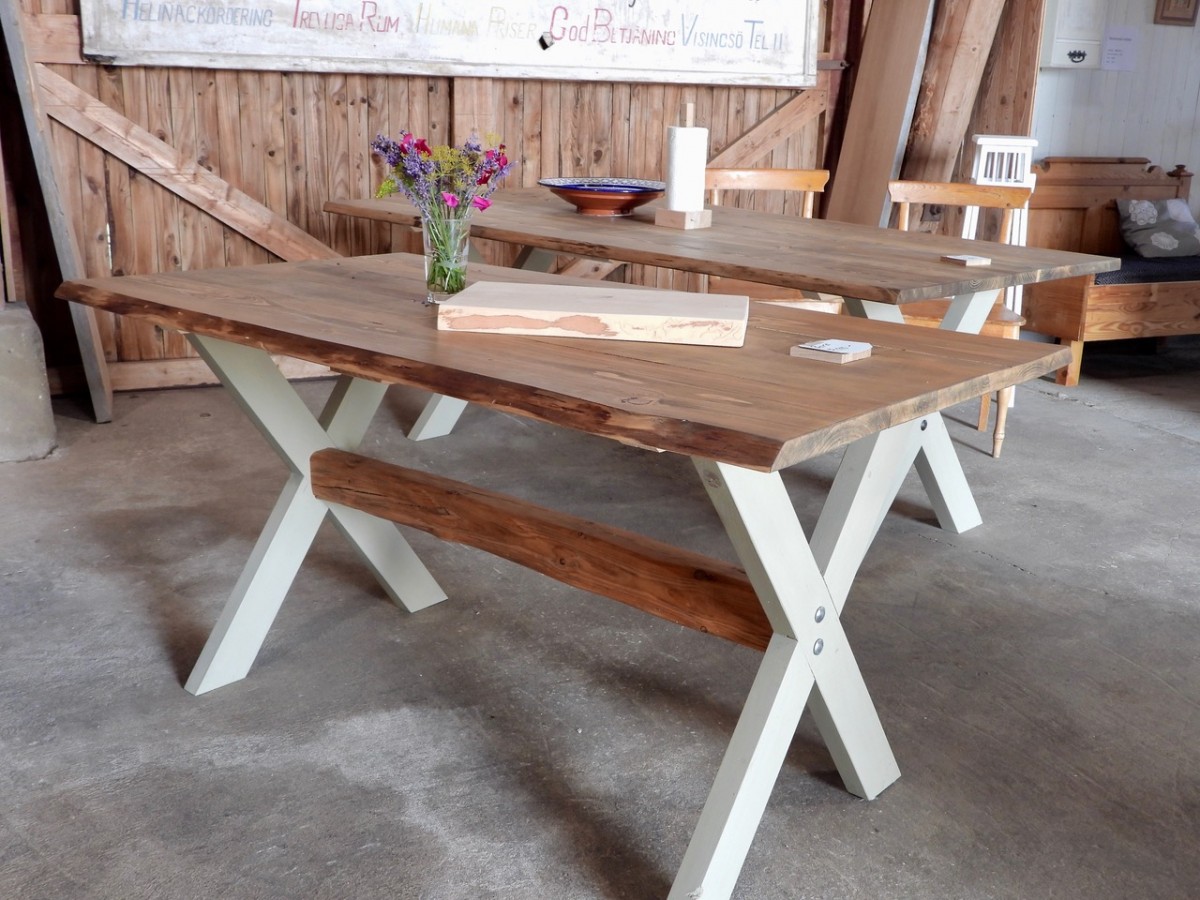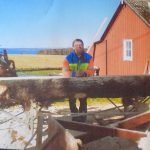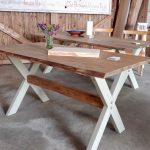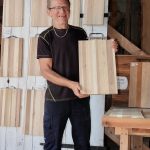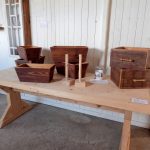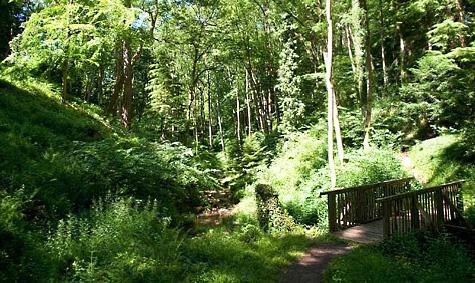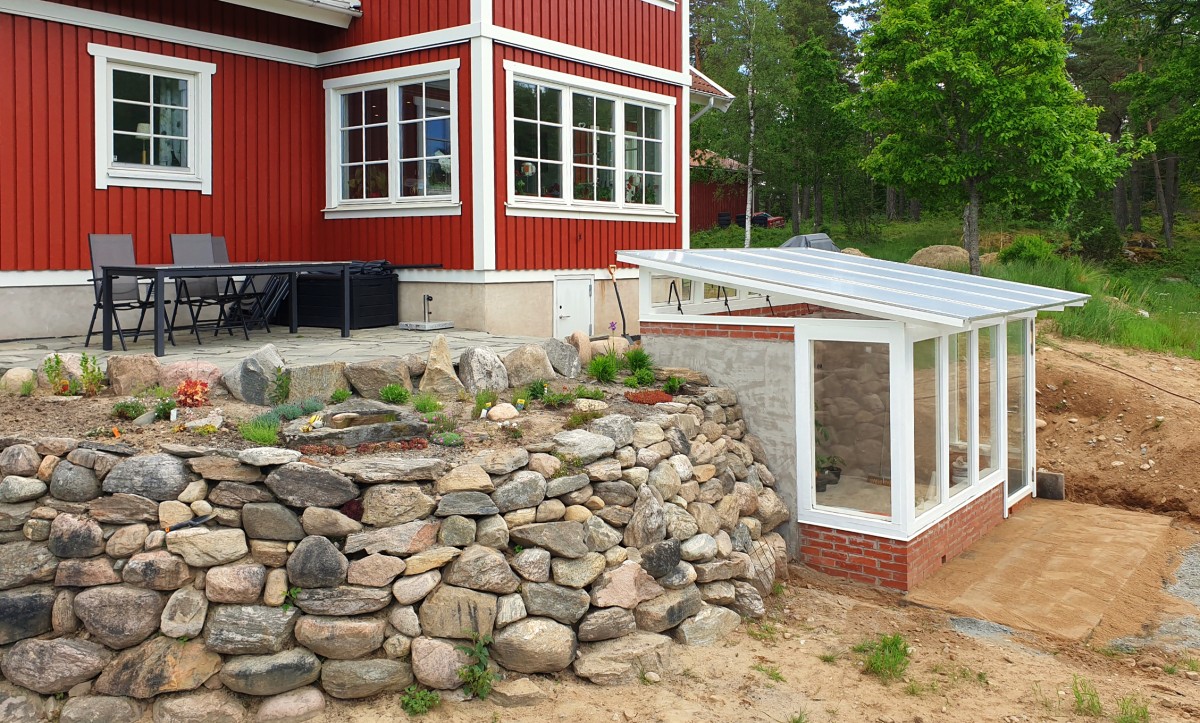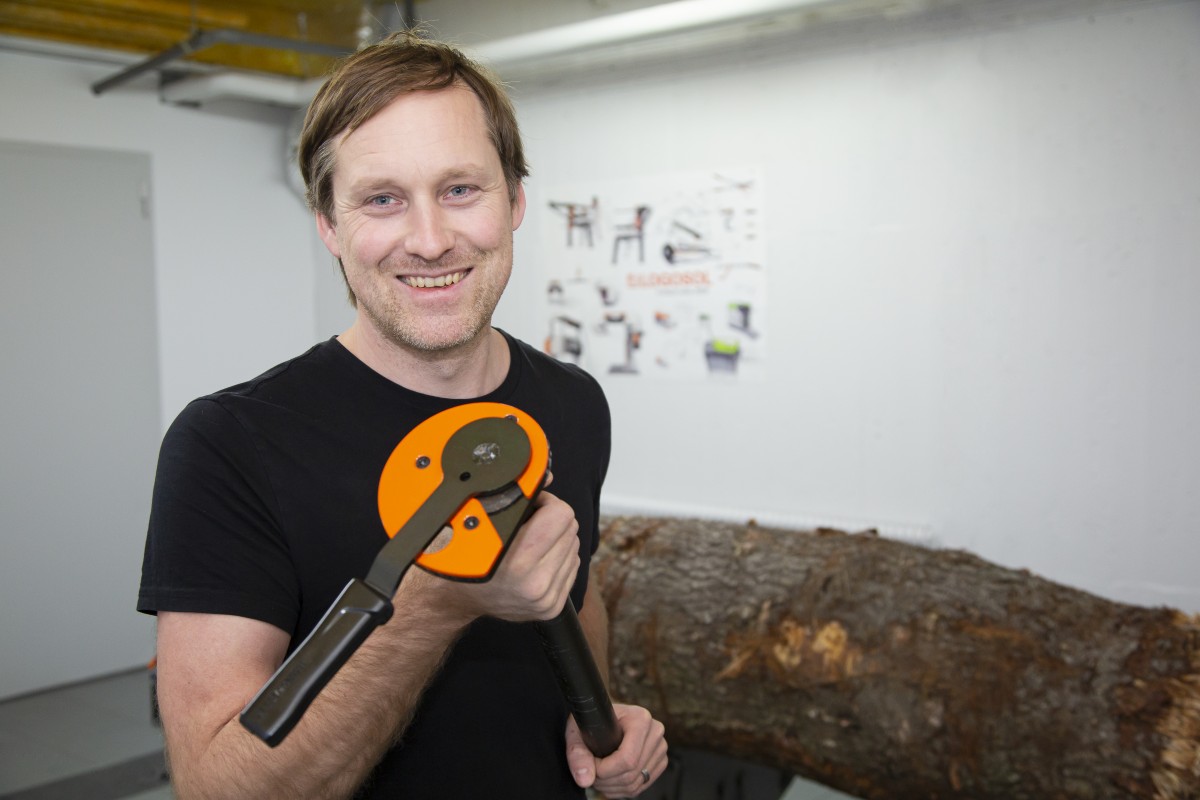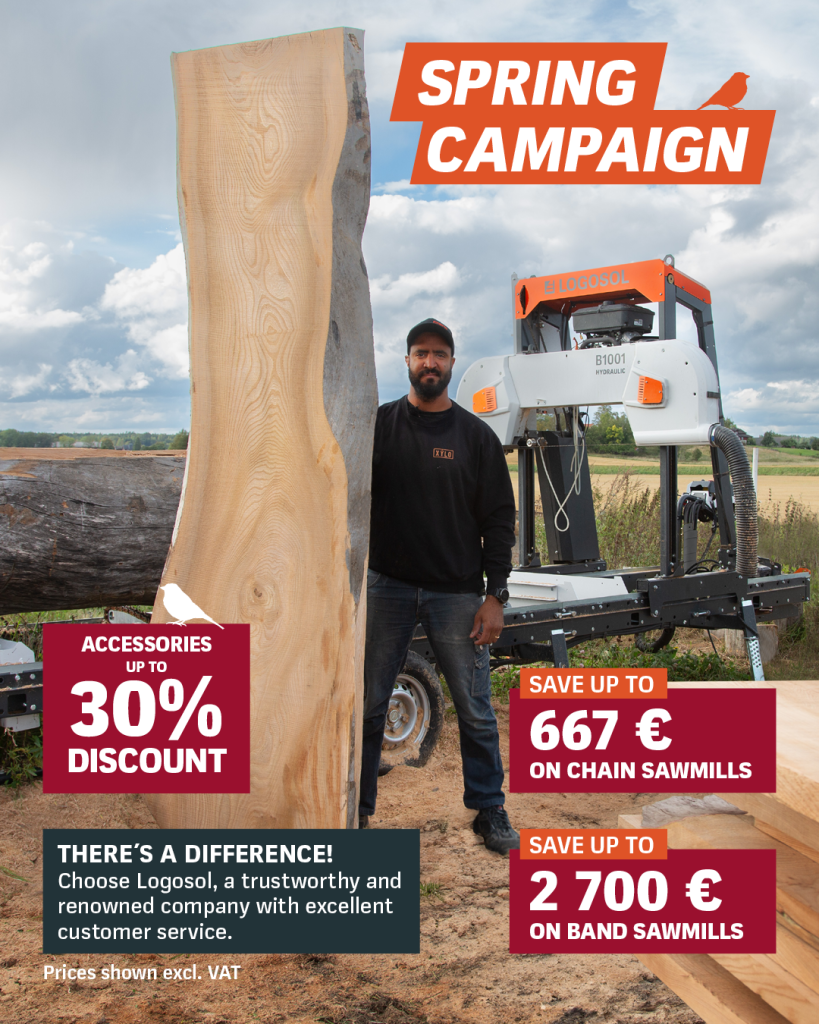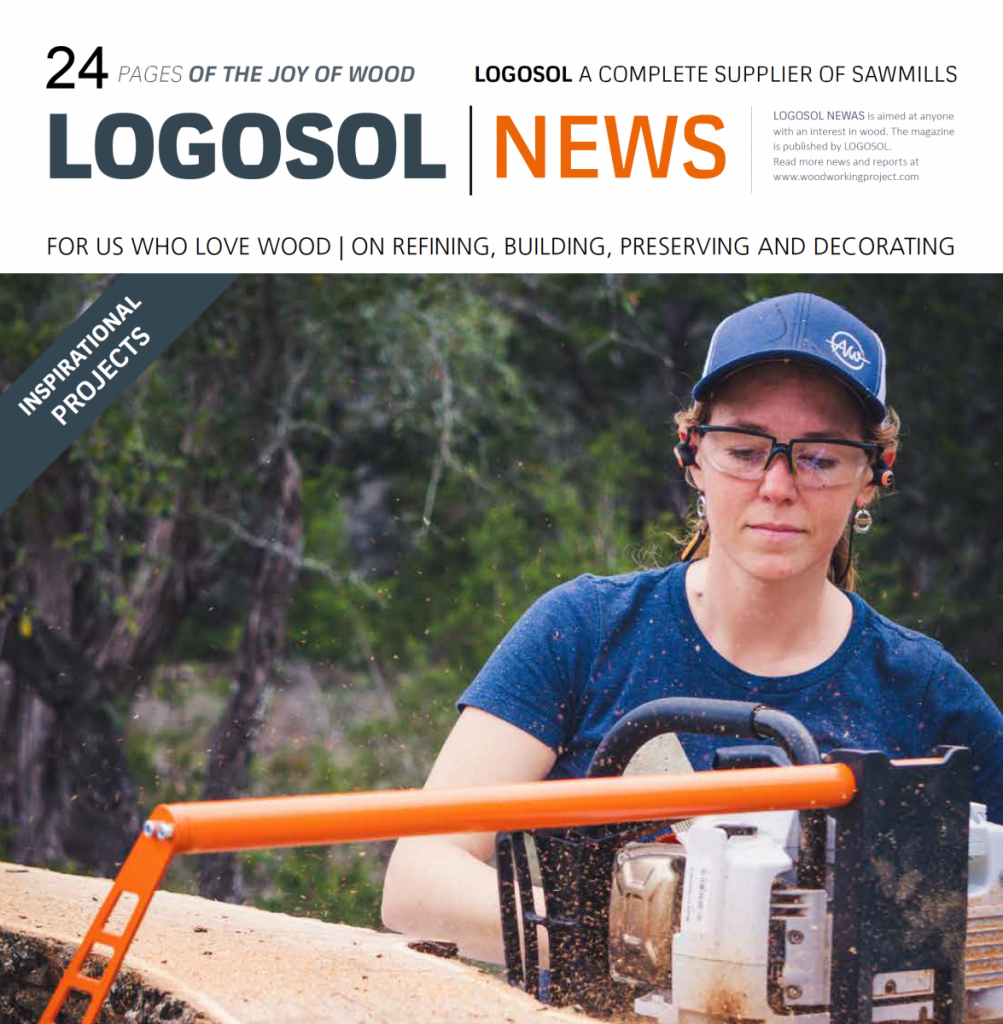When Stefan bought a house built in the beginning of the 17th century, his interest in building conservation was born. Then he bought a Logosol chain sawmill (Logosol M5) and renovated the cladding in the old style – with boards of irregular widths.
- By painting parts of the furniture, the wood is beautifully accentuated.
- By painting parts of the furniture, the wood is beautifully accentuated.
- Cutting boards made of different woods, such as oak, birch, ash, maple, goat willow and larch.
- The SH410 from Logosol is an invaluable machine for the one who owns a sawmill.
”It’s amazing to be able to cut your own timber. This way I can use a style that reflects the age of the house.”
On his farm, Stefan cuts oak, ash, sometimes goat willow and cherry wood, and other sorts of wood that he get hold of on the Swedish island Visingsö.
”We have the famous Visingsö oaks, which were planted here 200 years ago, and that now partially are allowed to be felled.
The oaks on Visingsö were planted for naval shipbuilding. From when they had a diameter of approx. 15 cm and up until they had finished growing in height, the oaks were pruned close to the branch collar to become tall and straight.
”You won’t find many knots in those boards,” says Stefan.
The interest in building conservation grew into cabinetmaking, which for Stefan includes the making of tables, benches, cutting boards and flower boxes, using recycled timber from demolished buildings. The planer SH410 is in operation almost every day and feeds out joinery material for the renovation of the houses on the farm and other woodwork projects. A 250-year-old log barn and a henhouse that is being converted into an exhibition room, are projects that are going on right now.
During the art walk, which is held the first weekend in August, and during the harvest weekend in September, 500-600 people will come by and look at my furniture, so I need some space for my products.
Stefan has many exciting things in the pipeline and we will continue following his projects in the future.

